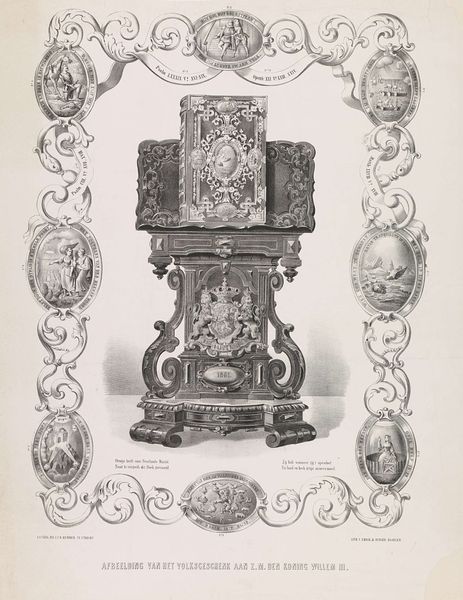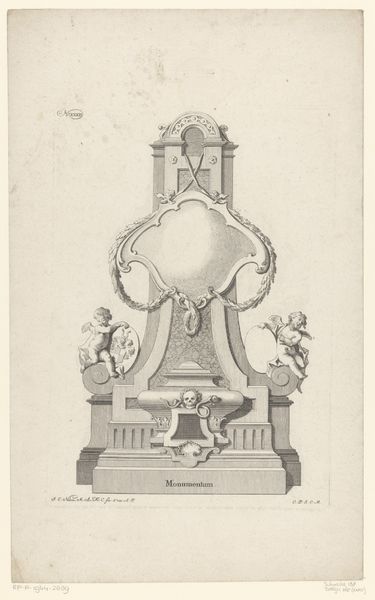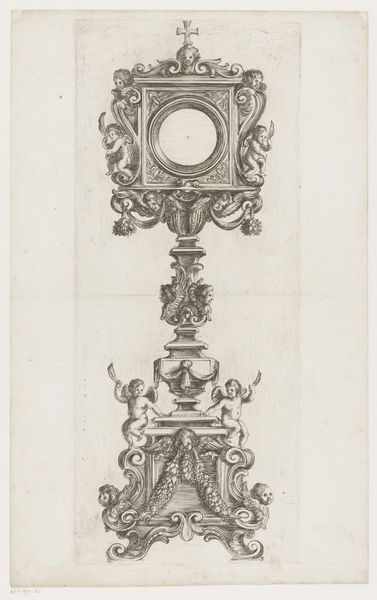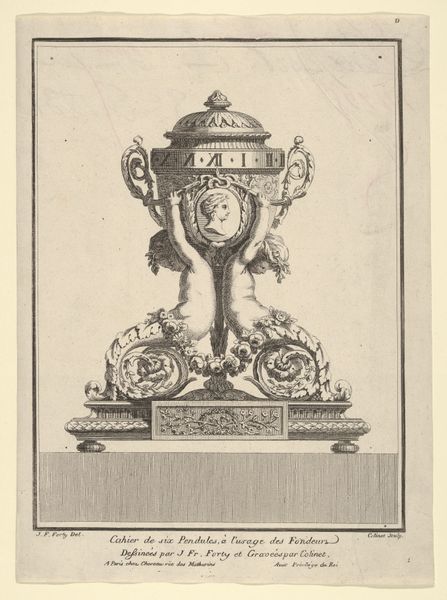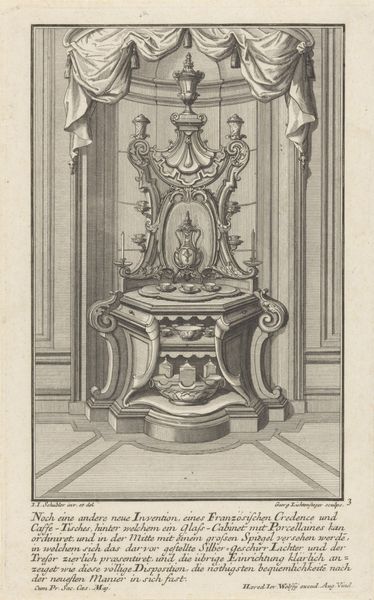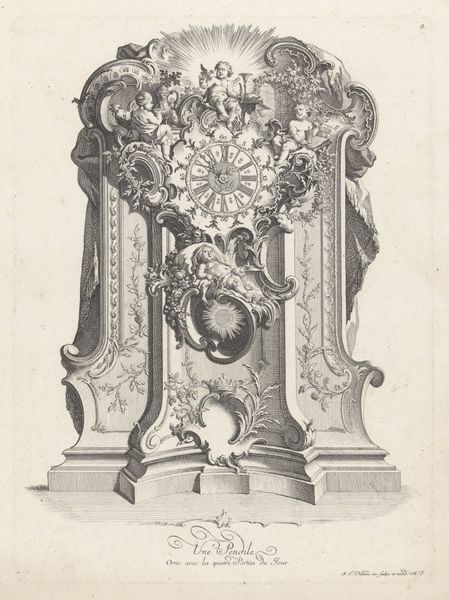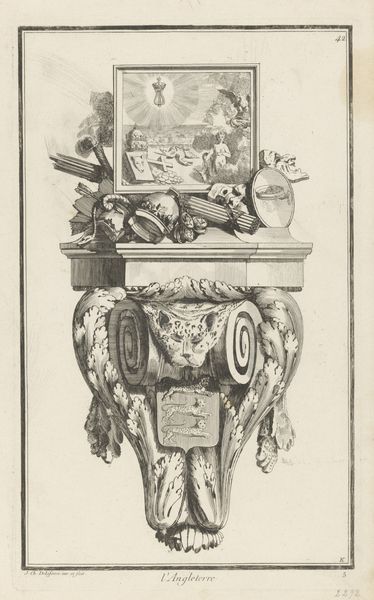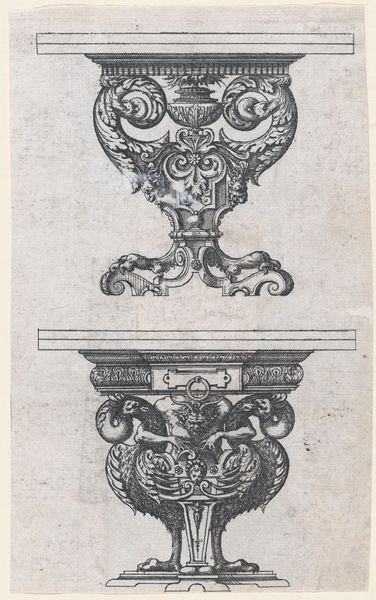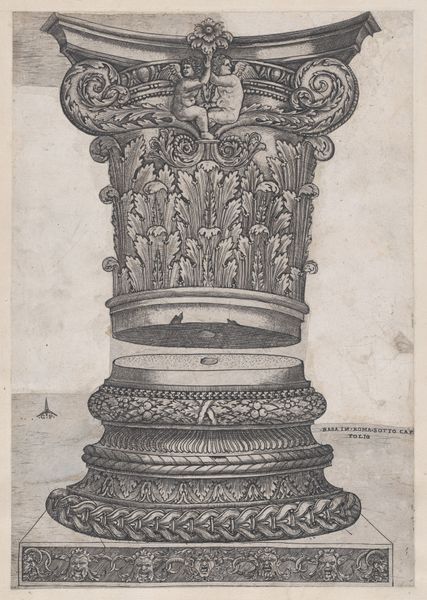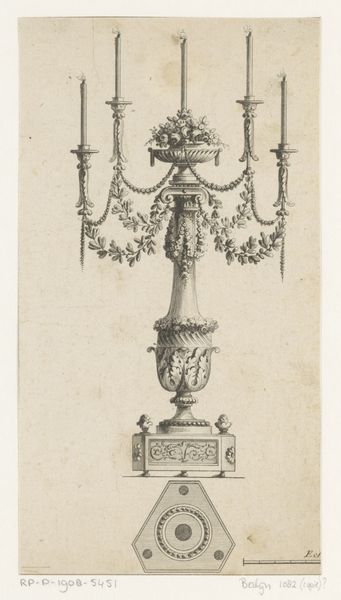
print, engraving
# print
#
old engraving style
#
history-painting
#
academic-art
#
decorative-art
#
engraving
Dimensions: height 702 mm, width 537 mm
Copyright: Rijks Museum: Open Domain
This lithograph from 1862, by an anonymous artist, presents a 'presentation bible' given to King William III. Immediately, the composition strikes us with its hierarchical arrangement and ornate detail. The bible, centered and elevated, sits atop a pedestal, itself adorned with heraldic symbols. The artist employs a framing device, using decorative ovals that contain religious and allegorical scenes. This immediately evokes the symbolic framing of Renaissance altarpieces. The use of grayscale tones is not merely a technical constraint but a conscious choice. It emphasizes form and texture, shifting our focus from color to the underlying structure of the image. Semiotically, the artwork functions as a signifier of power and reverence. The meticulous detailing and the strategic placement of religious and national symbols serve to reinforce the King's authority, but also that of the divine and royal connection. Consider how the artist uses symmetry and the repetitive ovals not just aesthetically but as structural elements that amplify the theme of ordered authority. As viewers, we're invited to decode the layers of symbolism and reflect on the interplay between religious, national, and royal power. This creates meaning within the 19th century.
Comments
No comments
Be the first to comment and join the conversation on the ultimate creative platform.
